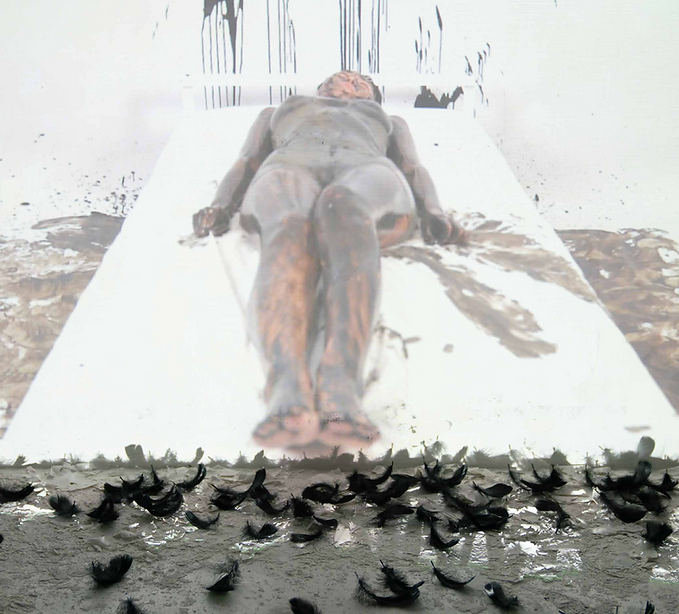
The understanding of
Pain
Collective memory and mystery views
21st Apirl- 5th July
Curator
Lisirui Wang
Time
How to consider the connection between pain and spirituality of females? The suffering of women depicted from a male perspective seems to have emerged as a grotesquely obsessive image throughout art history, yet it is so widespread and so easily ignored and hollow. This lack of subjectivity calls for women to interpret painful memories and the understanding of feminine wisdom in a different light. It is not that pain makes women conform to a certain aesthetic that is fascinating, but rather that women are artistic because they fall into the realm of pain into the spirituality of reflection. Four Asian artists give their answer and perspetives to the understanding.
Artists
Xinyue Luo(CAP),Xiaoshuo Deng, Mu Chen, Xinhao Li

< -1- >
Xinyue Luo is a student artist at the MA CAP in Edinburgh and she thinks mainly from the perspective of 'fulfilling the responsibilities and duties imposed by secular society'. Feminism is a source of inspiration for her work, which combines performance and painting to explore how to balance the contradictions of future identities, free from current constraints, and to exist in the world with a wider cosmic perspective.

< -2- >
Xiaoshuo Deng is a female artist working in public art at Musashino Art University in Japan. She focuses on the ordinary things around her, returning to the concerns of personal history in the context of capitalist society, women's living space, and the emotional dialogue between women. Her works have been exhibited in many exhibitions and she is a newcomer to the contemporary art scene in the Chinese-speaking world. I discovered her work at the Goshono Art University Art Festival and it has great potential, so I chose her as one of the main part of my curating.

< -3- >

Mu Chen is a young artist from the China Academy of Fine Arts who cuts her observations through the lens of portraiture. Most of her works have the artistic style of self-portraiture, in the form of observing oneself. The works shown are mainly gongbi figure paintings, using traditional Chinese gongbi techniques and materials to portray modern female figures, with a natural and clean palette, exploring a 'new state' of contemporary young women.
< -4- >
Xinhao Li another artist from Beijing/Qingdao, seems to have a different entanglement to the above artist in his exploration of film and television, as he has a non-transgender, cisgender male identity. He intervenes with a female perspective in his work and research, making a direct and powerful attack on Confucianism, the symbol of patriarchy. His 'spiritual' perspective is very interesting as he ideologically 'attains the Way' (which can be interpreted as realising the power of nature), just as the Chinese like the male protagonist of the classical novel Dream of the Red Chamber delves into the situation and destiny of women Entering the 'spiritual realm'.

